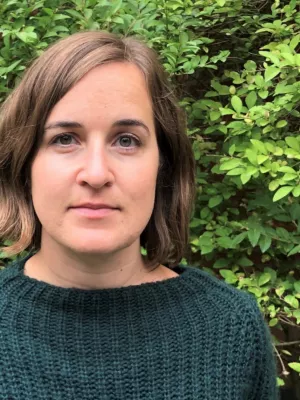
Pernilla Borgström
Projektledare

Assessing habitat quality of farm-dwelling house sparrows in different agricultural landscapes.
Författare
Summary, in English
Having historically been abundant throughout Europe, the house sparrow (Passer domesticus) has in recent decades suffered severe population declines in many urban and rural areas. The decline in rural environments is believed to be caused by agricultural intensification, which has resulted in landscape simplification. We used giving-up densities (GUDs) of house sparrows feeding in artificial food patches placed in farmlands of southern Sweden to determine habitat quality during the breeding season at two different spatial scales: the landscape and the patch scale. At the landscape scale, GUDs were lower on farms in homogeneous landscapes dominated by crop production compared to more heterogeneous landscapes with mixed farming or animal husbandry. At the patch level, feeding patches with a higher predation risk (caused by fitting a wall to the patch to obstruct vigilance) had higher GUDs. In addition, GUDs were positively related to population size, which strongly implies that GUDs reflect habitat quality. However, the increase followed different patterns in homogeneous and heterogeneous landscapes, indicating differing population limiting mechanisms in these two environments. We found no effect of the interaction between patch type and landscape type, suggesting that predation risk was similar in both landscape types. Thus, our study suggests that simplified landscapes constitute a poorer feeding environment for house sparrows during breeding, that the population-regulating mechanisms in the landscapes differ, but that predation risk is the same across the landscape types.
Avdelning/ar
- Biodiversitet
- Centrum för miljö- och klimatvetenskap (CEC)
- BECC: Biodiversity and Ecosystem services in a Changing Climate
- Biodiversitet och bevarandevetenskap
Publiceringsår
2012
Språk
Engelska
Sidor
959-966
Publikation/Tidskrift/Serie
Oecologia
Volym
168
Issue
4
Fulltext
- Available as PDF - 300 kB
- Download statistics
Dokumenttyp
Artikel i tidskrift
Förlag
Springer
Ämne
- Ecology
- Earth and Related Environmental Sciences
Nyckelord
- Giving-up density
- Foraging
- Conservation
- GUD
- Predation
Status
Published
Forskningsgrupp
- Biodiversity and Conservation Science
ISBN/ISSN/Övrigt
- ISSN: 1432-1939